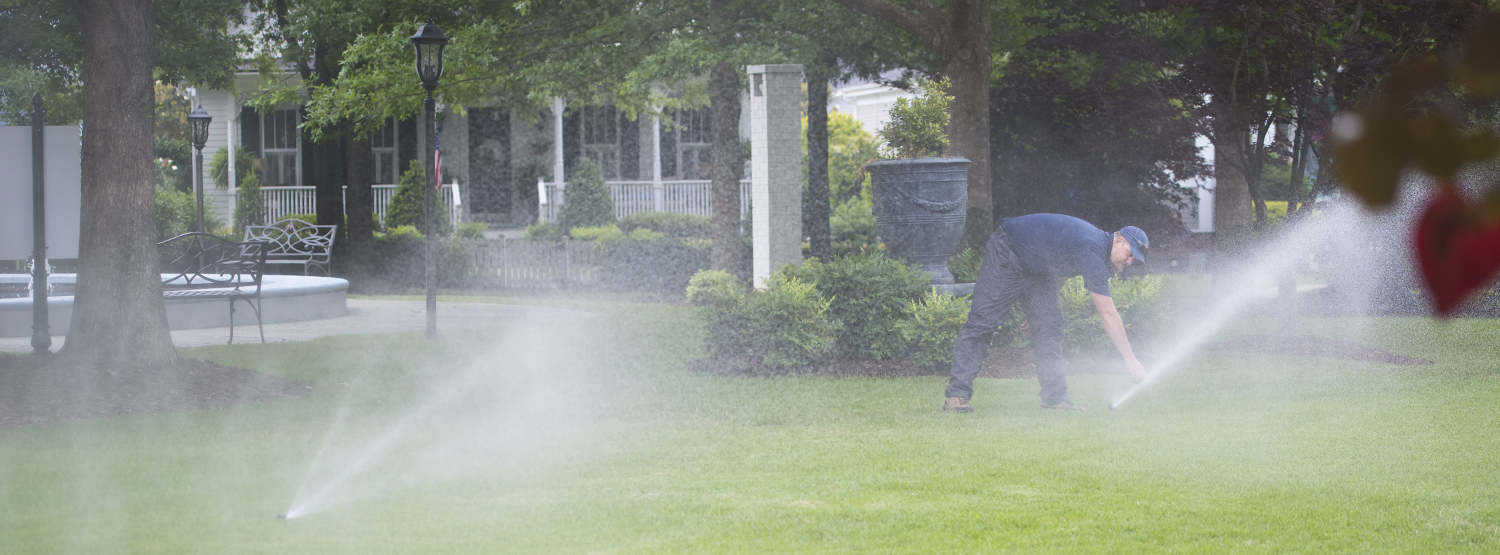
Understanding Your Lawn Sprinkler System
Maintaining a healthy and vibrant lawn requires a properly functioning sprinkler system. Before diving into maintenance tasks, it’s crucial to understand the basics of your system. Familiarize yourself with the different zones, types of sprinkler heads, and the main control panel. This knowledge will help you troubleshoot issues and perform maintenance more effectively.
Regular Inspection for Efficient Operation
Regular inspections are the cornerstone of lawn sprinkler system maintenance. Check for any leaks, clogged nozzles, or broken sprinkler heads. Inspect the irrigation lines for signs of wear or damage. A visual inspection every month or so can catch small problems before they escalate into larger, costlier issues.
Adjusting Sprinkler Heads for Optimal Coverage
Proper coverage is essential for even watering of your lawn. Make sure each sprinkler head is adjusted to reach its designated area without overlapping or leaving dry spots. Adjust the spray pattern and direction to avoid watering sidewalks, driveways, or other non-landscaped areas. This ensures that water is used efficiently and effectively.
Cleaning and Unclogging Sprinkler Nozzles
Over time, sprinkler nozzles can become clogged with dirt, debris, or mineral deposits. This can lead to uneven watering and reduced efficiency. Periodically remove and clean the nozzles to ensure a clear flow of water. A simple soak in vinegar or a thorough rinse with water can often clear minor clogs.
Checking the Water Pressure and Flow
Proper water pressure is crucial for the performance of your sprinkler system. Use a pressure gauge to measure the water pressure at various points in your system. Ideally, it should fall within the manufacturer’s recommended range. Low pressure can result in inadequate watering, while high pressure can cause damage to the system.
Inspecting Valves and Control Systems
Valves and control systems are the heart of your sprinkler system. Inspect these components regularly for leaks, corrosion, or signs of wear. Test each zone individually to ensure that valves open and close properly. Replace any malfunctioning valves or components promptly to prevent water waste and system damage.
Winterizing Your Sprinkler System
In colder climates, proper winterization is essential to protect your sprinkler system from freezing temperatures. Before the first frost, shut off the main water supply to the system and drain any remaining water from the lines. Insulate exposed pipes and valves to prevent freezing and potential damage.
Programming and Updating the Timer
Modern sprinkler systems often come with programmable timers for automated watering schedules. Review and update your watering schedule seasonally to adjust for changes in weather and lawn needs. Consider using smart irrigation controllers that adjust watering based on weather forecasts and soil moisture levels.
Conducting Seasonal Tune-Ups
An annual tune-up of your sprinkler system can prevent major issues and keep it running smoothly. This includes checking electrical connections, lubricating moving parts, and inspecting the controller for any malfunctions. A professional service may also be beneficial for more thorough maintenance tasks.
Conserving Water with Smart Practices
In addition to regular maintenance, adopting water-saving practices can benefit both your lawn and the environment. Consider installing rain sensors to prevent watering during rainy periods. Mulching around plants and using drought-tolerant landscaping can reduce the need for excessive watering. Smart watering practices not only conserve water but also promote healthier, more resilient lawns.
Investing in Professional Maintenance Services
For those who prefer hands-off maintenance or have complex systems, hiring a professional sprinkler system service can provide peace of mind. Professionals can conduct thorough inspections, diagnose hidden issues, and perform necessary repairs or upgrades. This investment can prolong the life of your system and ensure optimal performance.
Conclusion
Maintaining a lawn sprinkler system is essential for the health and appearance of your lawn. By understanding the system, conducting regular inspections, adjusting sprinkler heads, cleaning nozzles, checking water pressure, inspecting valves, winterizing, updating timers, conducting seasonal tune-ups, conserving water, and considering professional services, you can keep your system in top shape. With these essential tips, you can ensure efficient watering, lush greenery, and a vibrant landscape throughout the year. Read more about lawn sprinkler system maintenance
